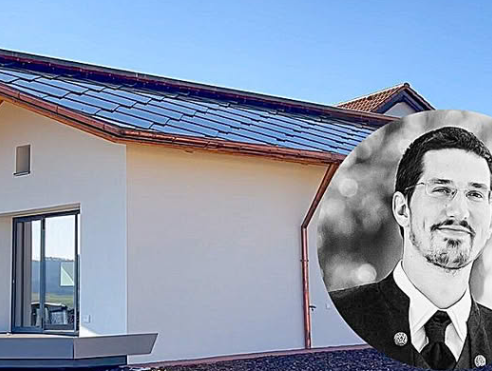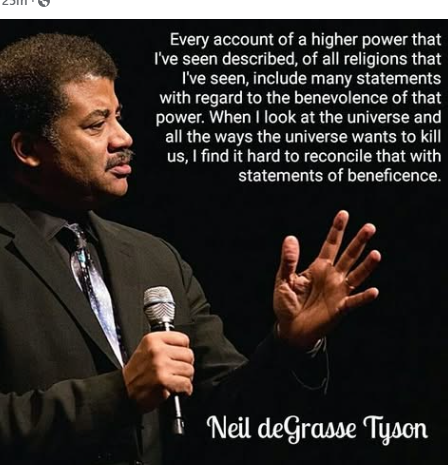Introduction Sustainable Energy and Sustainable Urbanization Strategies
In an era of rapid urbanization and increasing energy demand, the pursuit of sustainable energy and sustainable urbanization strategies has become imperative.
As the world’s population gravitates toward cities, it is crucial to develop urban areas that prioritize environmental responsibility, energy efficiency, and resilience.
This article explores the crucial link between sustainable energy and sustainable urbanization, highlighting how the integration of these two concepts can create smart, green, and livable cities for the future.
The Importance of Sustainable Energy in Urban Contexts
Cities are major consumers of energy and contribute significantly to greenhouse gas emissions. Sustainable energy solutions offer numerous benefits in urban environments, including:
1. Reduced carbon footprint: Sustainable energy sources, such as solar, wind, and geothermal power, provide clean alternatives to fossil fuels. By embracing renewable energy, cities can significantly reduce their carbon footprint, mitigate climate change, and improve air quality.
2. Energy efficiency: Sustainable urbanization focuses on energy-efficient buildings, smart grids, and optimized energy consumption. Energy-efficient technologies, including LED lighting, smart thermostats, and energy management systems, help reduce energy waste and enhance resource conservation.
3. Energy security and resilience: Cities that diversify their energy sources and invest in decentralized energy systems are better equipped to withstand disruptions and ensure a reliable energy supply. Renewable energy, combined with energy storage solutions, can enhance resilience during natural disasters or grid failures.
4. Cost savings and economic growth: Sustainable energy solutions not only contribute to cost savings for urban dwellers and businesses but also drive economic growth. The renewable energy sector creates jobs, attracts investments, and stimulates local economies.
Sustainable Urbanization Strategies
Sustainable urbanization involves designing and developing cities with a focus on environmental, social, and economic sustainability.
Here are key strategies that integrate sustainable energy into urban planning:
1. Energy-efficient buildings: Sustainable urbanization emphasizes the construction and retrofitting of energy-efficient buildings. This includes utilizing green building materials, optimizing insulation, installing energy-efficient appliances, and promoting passive design principles to reduce energy consumption.
2. Smart grids and infrastructure: Smart grids enable efficient energy distribution, demand response mechanisms, and integration of renewable energy sources. By deploying intelligent infrastructure, such as smart meters and sensors, cities can monitor energy usage, identify areas for improvement, and enable more precise energy management.
3. Sustainable transportation: Promoting sustainable modes of transportation, such as public transit, cycling infrastructure, and electric vehicles, reduces reliance on fossil fuel-powered vehicles and mitigates air pollution. Cities can develop comprehensive transportation plans that prioritize accessibility, reduce congestion, and encourage active modes of mobility.
4. Renewable energy integration: Urban areas can integrate renewable energy generation into their infrastructure through solar panels on rooftops, wind turbines in suitable locations, and geothermal systems for heating and cooling. Localized renewable energy projects, such as community solar installations or district-level energy systems, can increase energy self-sufficiency and resilience.
5. Integrated land use and green spaces: Sustainable urbanization emphasizes compact and mixed-use development, reducing sprawl and the need for long-distance commuting. It also promotes the integration of green spaces, urban parks, and rooftop gardens, which improve air quality, enhance biodiversity, and provide recreational areas for residents.
Benefits of Sustainable Energy in Sustainable Urbanization
The integration of sustainable energy into sustainable urbanization strategies brings several benefits:
1. Environmental sustainability: Sustainable energy sources reduce greenhouse gas emissions, combat climate change, and preserve natural resources. By prioritizing sustainable energy, cities can mitigate the environmental impact of urbanization and create healthier living environments for residents.
2. Enhanced quality of life: Sustainable urbanization strategies, coupled with sustainable energy, lead to improved air and water quality, reduced noise pollution, and better access to clean energy services. This enhances the overall quality of life for urban dwellers, promoting physical and mental well-being.
3. Economic growth and job creation: The transition to sustainable energy in urban areas stimulates economic growth and creates employment opportunities. The development, installation, and maintenance of renewable energy infrastructure generate jobs in various sectors, including manufacturing, construction, and technology.
4. Energy affordability and equity: Sustainable energy can help address energy poverty and ensure affordable access to clean energy for all residents. By implementing inclusive policies and programs, cities can prioritize vulnerable communities and provide equitable access to renewable energy services, reducing energy disparities.
5. Resilience and adaptability: Sustainable energy integration enhances urban resilience in the face of climate change and other challenges. Localized renewable energy systems and microgrids provide backup power during emergencies, ensuring essential services and critical infrastructure remain functional.
Leading Examples of Sustainable Energy in Sustainable Urbanization
Numerous cities around the world have embraced sustainable energy in their urban development strategies.
Here are a few notable examples:
1. Copenhagen, Denmark: Copenhagen aims to be carbon-neutral by 2025 and has made significant progress in integrating sustainable energy. The city promotes cycling, has an extensive district heating system, and invests in wind power. It also embraces smart grid technologies and implements energy-efficient building standards.
2. Curitiba, Brazil: Curitiba is renowned for its sustainable urban planning initiatives. The city prioritizes public transit, with a well-developed bus rapid transit system, bike lanes, and pedestrian-friendly areas. Curitiba also utilizes renewable energy sources, such as solar panels, to power public buildings and streetlights.
3. Vancouver, Canada: Vancouver has set ambitious sustainability goals, including 100% renewable energy for electricity by 2050. The city focuses on energy-efficient buildings, supports renewable energy projects, and encourages the adoption of electric vehicles. Vancouver also promotes green spaces and prioritizes active transportation options.
4. Masdar City, United Arab Emirates: Masdar City is a planned sustainable city that aims to be a global leader in renewable energy and clean technologies. It integrates solar power, energy-efficient buildings, and smart grid systems. Masdar City serves as a living laboratory for sustainable urbanization and showcases innovative solutions for a low-carbon future.
Conclusion Sustainable Energy and Sustainable Urbanization Strategies
The integration of sustainable energy into sustainable urbanization strategies is crucial for creating smart, green, and resilient cities.
By prioritizing renewable energy sources, energy efficiency, and sustainable transportation, cities can mitigate climate change, improve air quality, and enhance the overall quality of life for residents.
Sustainable energy also brings economic benefits, job creation, and equitable access to clean energy services.
As cities continue to grow and face pressing environmental challenges, it is essential to adopt holistic approaches that integrate sustainable energy into urban planning. Governments, urban planners, and communities must collaborate to develop innovative solutions, leverage new technologies, and prioritize sustainability in urban development. By embracing sustainable energy in sustainable urbanization, we can pave the way for a more sustainable and livable future for generations to come.
https://www.exaputra.com/2023/07/sustainable-energy-and-sustainable.html
Renewable Energy
Manufacturer of “Micro-Wind” Turbines Says, “Start Generating Wind Power on Your Roof Today!”
 If you’re interested in this, you might want to ask yourself:
If you’re interested in this, you might want to ask yourself:
Do I have good wind conditions 10 – 20 feet off the ground, surrounded by other houses and trees?
Mustn’t there be a reason that real wind farms are cited away from buildings, and the turbines are hundreds of feet in the air?
Why did the small wind industry vanish about 15 years ago?
Manufacturer of “Micro-Wind” Turbines Says, “Start Generating Wind Power on Your Roof Today!”
Renewable Energy
Astrophysics and Theology
 At left are the words of Neil deGrasse Tyson, noted astrophysicist and atheist.
At left are the words of Neil deGrasse Tyson, noted astrophysicist and atheist.
His point here seems to be that a loving god would protect us from the threats we face from all corners of the universe.
This is a very common theme in theology: How is it possible that a loving god doesn’t help good people, while allowing evil to prosper?
But it gets worse. Is it a human concept to sentence the unfaithful to suffer eternal torture? Should unfaithful wives be stoned to death?
The list goes on and on.
Renewable Energy
Discussion on Gun Control
 The message at left is that we live among people who believe that every U.S. citizen should be armed at all times. Every teacher, real estate agent, pastry chef, little old lady, and perhaps even our kids themselves, so often murdered by lunatics with assault rifles.
The message at left is that we live among people who believe that every U.S. citizen should be armed at all times. Every teacher, real estate agent, pastry chef, little old lady, and perhaps even our kids themselves, so often murdered by lunatics with assault rifles.
I can hear the Lt. Colonel saying, “The only thing that will stop a psychotic killer with an AR-15 in a schoolroom is a six-year-old with a gun.”
Seriously, there is an important fact here: each year, the United States has 78% of the world’s mass shootings; the other 22% are the aggregate of the other 200+ nations of the world.
Are more guns the answer?
-
Climate Change4 months ago
Guest post: Why China is still building new coal – and when it might stop
-
Greenhouse Gases4 months ago
Guest post: Why China is still building new coal – and when it might stop
-
Climate Change2 years ago
Spanish-language misinformation on renewable energy spreads online, report shows
-

 Greenhouse Gases2 years ago
Greenhouse Gases2 years ago嘉宾来稿:满足中国增长的用电需求 光伏加储能“比新建煤电更实惠”
-
Climate Change Videos2 years ago
The toxic gas flares fuelling Nigeria’s climate change – BBC News
-

 Climate Change2 years ago
Climate Change2 years ago嘉宾来稿:满足中国增长的用电需求 光伏加储能“比新建煤电更实惠”
-

 Carbon Footprint2 years ago
Carbon Footprint2 years agoUS SEC’s Climate Disclosure Rules Spur Renewed Interest in Carbon Credits
-
Climate Change2 years ago
Why airlines are perfect targets for anti-greenwashing legal action





